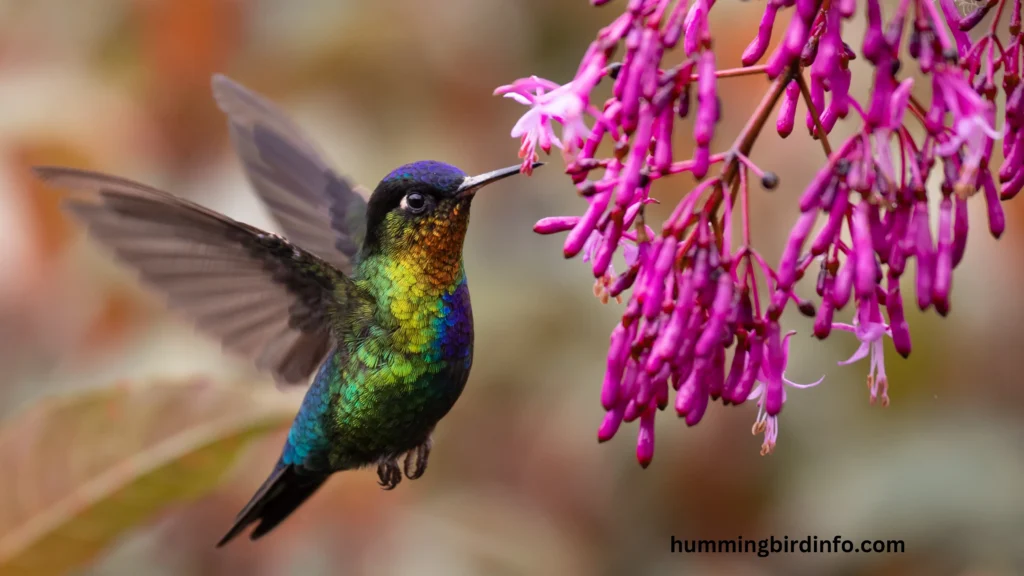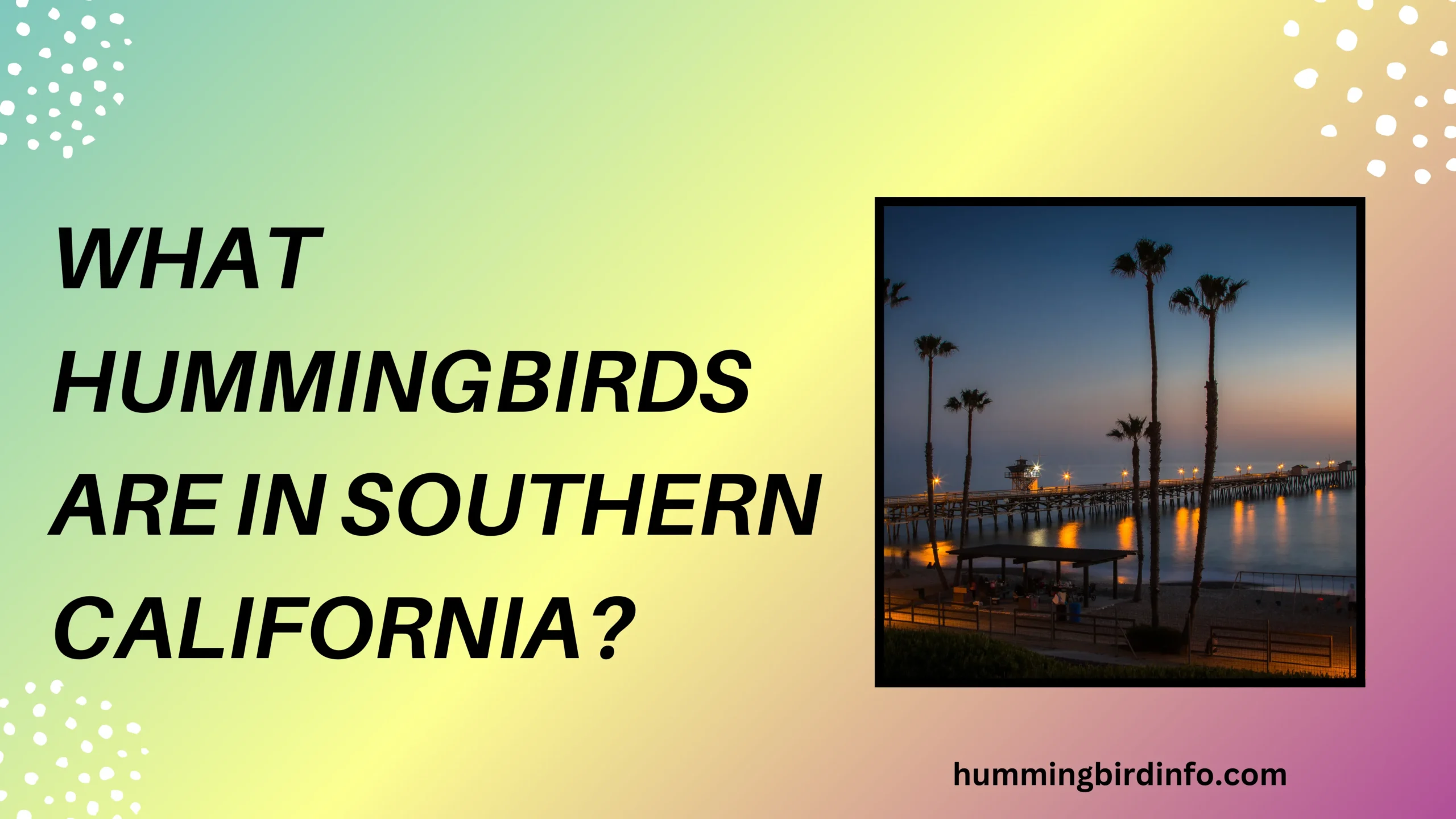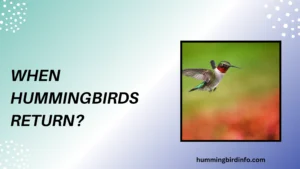Southern California is a land of contrasts, where sun-soaked beaches meet rugged chaparral-covered hills, and vast deserts blend with shaded oak woodlands. This rich tapestry of ecosystems provides a vibrant stage for one of nature’s most dazzling performers — the hummingbird.
These tiny, iridescent birds are like living jewels flitting through the varied landscapes, adding bursts of color and life wherever they appear. Their presence is not just a delight to the eye but a vital part of the region’s ecological fabric.
Understanding which hummingbird species inhabit Southern California opens a window into the complexity and beauty of this environment. From bustling urban gardens to remote desert canyons, hummingbirds adapt and thrive, revealing secrets about migration, survival, and nature’s delicate balance.
Whether you’re a seasoned birdwatcher or simply curious about these sparkling creatures, knowing what species are here and how they live enriches our connection to the world around us.
This article will explore the diverse hummingbird species found across Southern California, highlighting their unique traits, habitats, and behaviors. We’ll also share tips on how to attract and observe these fascinating birds, helping you become part of their story.
Southern California’s geography and climate create a hotspot for hummingbird diversity, making it an exciting place to witness these tiny marvels in action.
Contents
- 1 The Regular Residents and Common Visitors
- 2 Less Common and Occasional Visitors
- 3 Southern California’s Unique Hummingbird Ecology
- 4 Attracting and Observing Hummingbirds in Southern California
- 5 Conclusion
- 6 FAQs
- 7 1. What hummingbird species can I see year-round in Southern California?
- 8 2. When is the best time to see Rufous Hummingbirds in Southern California?
- 9 3. How can I attract hummingbirds to my garden?
- 10 4. Are hummingbirds important for Southern California’s ecosystem?
- 11 5. Do hummingbirds migrate through Southern California?
- 12 6. Can I feed hummingbirds year-round?
The Regular Residents and Common Visitors
Anna’s Hummingbird (Calypte anna) is Southern California’s most familiar hummingbird, thriving year-round from urban gardens to oak woodlands. The male’s shimmering green back and rose-red crown contrast with the more subdued female, making them relatively easy to identify.
These birds have adapted well to human environments, frequenting feeders and a variety of flowering plants. Their bold territorial behavior, especially around feeders, makes them a favorite among backyard birdwatchers.

Anna’s hummingbirds begin nesting early in the year, showcasing their resilience and adaptability.
In the arid Mojave and Sonoran deserts, Costa’s Hummingbird (Calypte costae) reigns supreme. The male’s brilliant violet crown and distinctive gorget feathers stand out vividly against desert blooms like ocotillo and chuparosa.
This species is a desert specialist, perfectly adapted to the harsh climate and sparse vegetation. Costa’s hummingbird uses its high-pitched song during courtship, a sound that blends into the desert’s quiet. Their breeding aligns closely with the desert’s flowering season, ensuring food availability.
Along the Southern California coast, Allen’s Hummingbird (Selasphorus sasin) holds its territory. The male’s fiery orange back and gorget create a striking display during the coastal breeding season.
These hummingbirds prefer chaparral and coastal scrub, often frequenting gardens. Allen’s hummingbirds undertake a fascinating elliptical migration route, traveling north along the coast in spring and south through inland valleys in fall, showcasing their complex migratory behavior.
The Rufous Hummingbird (Selasphorus rufus) is a fiery migrant passing through Southern California. Males boast a vivid rusty-orange body and bright red gorget, while females have subtler coloring with rusty flanks. Known for their impressive long-distance migration, Rufous hummingbirds travel between Mexico and as far north as Alaska.
During stopovers in Southern California’s mountain meadows and forests, they are fiercely territorial despite their transient presence.
Inland valleys and riparian zones host the Black-chinned Hummingbird (Archilochus alexandri), recognized by the male’s black throat that can appear purple in light. These birds arrive from Mexican wintering grounds to breed and depart by late summer.
Their habitats include foothills and riverbanks, where they take advantage of native plants and occasional feeders. This species exemplifies the inland diversity of Southern California’s hummingbird population.
Less Common and Occasional Visitors
Though less frequently seen, several other hummingbird species add to Southern California’s richness. The Calliope Hummingbird (Selasphorus calliope), the smallest bird in North America, migrates through the region during spring and fall.
Its male’s magenta throat feathers make it distinctive, though it’s mostly a mountain visitor.
The Broad-billed Hummingbird (Cynanthus latirostris) is a rare southern stray, often spotted in riparian canyons near the border. Males display an iridescent green body and brilliant blue throat with a red bill, a dazzling sight for lucky birders.
Even rarer are the Violet-crowned Hummingbird (Amazilia violiceps), the White-eared Hummingbird (Hylocharis leucotis), and the Lucifer Hummingbird (Calothorax lucifer), each a unique visitor bringing flashes of color and mystery to mountain or desert habitats.
These sightings are prized for their rarity and the glimpse they provide into hummingbird range expansions.
Southern California’s Unique Hummingbird Ecology
Southern California’s diverse plant life provides nectar-rich flowers that support hummingbirds year-round. From the sage and manzanita of chaparral to desert succulents and coastal buckwheat, these plants and hummingbirds have evolved together, creating specialized relationships between flower shape and bird feeding behavior.
Positioned along the Pacific Flyway, Southern California is a key migratory corridor. Hummingbirds traveling thousands of miles use the region as a resting and feeding stop, making it essential for their survival.
The region’s varied climate and geography allow different species to find their own niche, reducing competition and enabling coexistence.
However, urbanization and introduced plant species influence hummingbird behavior and distribution. While feeders and exotic plants can benefit some species like Anna’s hummingbird, they may also alter natural patterns and interactions.
Understanding these dynamics is vital for conservation efforts and maintaining healthy hummingbird populations.
Attracting and Observing Hummingbirds in Southern California
Setting up clean hummingbird feeders with the correct sugar-water ratio (one part sugar to four parts water) is crucial for attracting these birds. Timing your feeders with breeding and migration seasons maximizes their effectiveness.
Native flowering plants are even better, providing sustainable nectar sources throughout the year.

Adding shallow water features or misting stations can also attract hummingbirds, especially in drier areas. Observers should visit habitats like coastal scrub, chaparral, and desert washes during peak seasons for the best viewing opportunities. Utilizing local bird guides and citizen science platforms like eBird enhances the experience and contributes to hummingbird research.
Conclusion
Southern California’s hummingbird diversity is a testament to the region’s varied landscapes and strategic location. From year-round residents like Anna’s hummingbird to rare desert and mountain visitors, these sparkling birds play a crucial role in pollination and ecological balance.
Their presence enriches both natural and human environments, connecting us to the vibrant pulse of local ecosystems.
By understanding and appreciating these tiny marvels, we can support their survival through habitat preservation, responsible gardening, and awareness. Southern California’s hummingbirds are more than just fleeting flashes of color — they are resilient symbols of life’s beauty and complexity, deserving our admiration and protection for generations to come.
FAQs
1. What hummingbird species can I see year-round in Southern California?
The most common year-round species is Anna’s Hummingbird, which thrives in urban and suburban areas across the region.
2. When is the best time to see Rufous Hummingbirds in Southern California?
Rufous hummingbirds pass through mainly during spring and fall migrations, with sightings typically in higher elevations and inland areas.
3. How can I attract hummingbirds to my garden?
Plant native, nectar-rich flowers and maintain clean feeders with a 1:4 sugar-water mix, especially during migration and breeding seasons.
4. Are hummingbirds important for Southern California’s ecosystem?
Yes, hummingbirds are vital pollinators, helping native plants reproduce and maintain biodiversity.
5. Do hummingbirds migrate through Southern California?
Many species, such as Rufous and Calliope hummingbirds, use Southern California as a stopover along the Pacific Flyway during their long migrations.
6. Can I feed hummingbirds year-round?
It’s best to offer feeders during the breeding and migration periods, but in some urban areas, feeders can be maintained year-round to support resident species.








